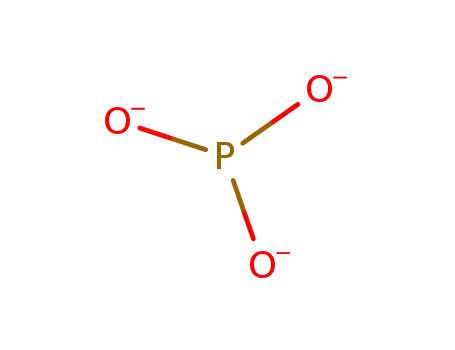10.1016/j.bmcl.2011.05.083
The research focuses on the efficient synthesis of 3-O-thia-cPAs (4a–d), sulfur analogues of cyclic phosphatidic acid (cPA), with the key step being an intramolecular Arbuzov reaction to construct the cyclic thiophosphate moiety. The synthetic route allows for the production of 4a–d in just four steps from commercially available glycidol. Preliminary biological experiments were conducted to assess the inhibitory effect of 4a–d on autotaxin (ATX), an enzyme involved in controlling the concentration of lysophosphatidic acid (LPA), which affects cell proliferation and cancer cell metastasis. The study used various reactants including glycidol, thioacetic acid, methanol, 2,4-dinitrobenzenesulfenyl chloride, and phosphite, among others, to synthesize the target compounds. The chemical structures of the synthesized compounds were confirmed using NMR (1H NMR, 31P NMR, and HH-COSY) and mass spectrometry. The biological activity was evaluated through ATX inhibition assays, which showed that 3-O-thia-cPAs exhibited a similar inhibitory effect on ATX as the original cPA, with the potency order being 2-O-ccPA 3c > 3-O-thia-cPAs 4a–d > cPA 2a.
10.1016/j.jorganchem.2015.09.031
The study focuses on the synthesis and characterization of air-stable platinum(II) complexes with bulky aryl phosphite ligands, which are effective for intramolecular C-H activation. The researchers synthesized phosphite ligands from substituted phenols and either PCl3 or P(NMe2)3 without the need for an external base. These ligands were then used to form platinum(II) complexes, which were characterized using various techniques including NMR spectroscopy, elemental analysis, and X-ray crystallography. The purpose of these chemicals was to create stable complexes that could undergo thermolysis at 100°C, resulting in the formation of metallacycles through intramolecular sp3 C-H activation, a process that transforms inert C-H bonds into more reactive species. This research is significant for understanding and potentially enhancing the catalytic activity of platinum complexes in various chemical transformations.
10.1021/jo001545e
The study investigates the photo-Arbuzov rearrangements of 1-arylethyl phosphites, specifically focusing on compounds 7, 8, and 9, to explore their stereochemical behavior and the formation of radical-pair intermediates. Phosphite 7, predominantly (R)-1-phenylethyl phosphite, undergoes UV irradiation to yield phosphonate 10 with high stereospecificity. Phosphite 8, predominantly (S)-1-(4-acetylphenyl)-ethyl phosphite, and phosphite 9, predominantly (R)-1-(1-naphthyl)ethyl phosphite, exhibit different product distributions and stereochemical outcomes upon irradiation. The study employs various solvents and conditions, including direct UV irradiation and triplet sensitization, to control the formation of singlet or triplet radical pairs. The results provide evidence for radical pair formation and demonstrate a correlation between the stereochemistry at the migratory carbon and the multiplicity of the radical pairs. The study also uses TEMPO as a radical trap to investigate the cage combination and rotation processes of the radical pairs, yielding insights into the competition between these processes and the overall stereochemical integrity of the reactions.
10.1002/jhet.5570420515
The study focuses on the synthesis, structure, and electrochemical properties of two new unsymmetrical tetrathiafulvalene (TTF) derivatives, 2,3-bis(cyanoethylthio)-6,7-(methylethylenedithio)tetrathiafulvalene (6a) and 2,3-bis(cyanoethylthio)-6,7-(cyclopentodithio)tetrathiafulvalene (6b). These compounds were synthesized using a method involving the coupling of 1,3-dithiole-2-thione and 1,3-dithiole-2-one in the presence of phosphite. The synthesis started from (Et4N)2[Zn(dmit)2] and involved several steps, including alkylation and reactions with various reagents such as oligo(4,5-dihydro-1,3-dithiole-2,4,5-trithione) and cyclopentene. The molecular structures of 6a and 6b were determined by X-ray crystallography, revealing differences in the orientation of the cyanoethyl groups and packing modes. The redox properties of these compounds were investigated by cyclic voltammetry, showing two reversible single-electron redox couples for each, with close redox potentials indicating similar electron effects on the TTF core. The study highlights the potential of these unsymmetrical TTF derivatives for applications in organic conductors and superconductors.





